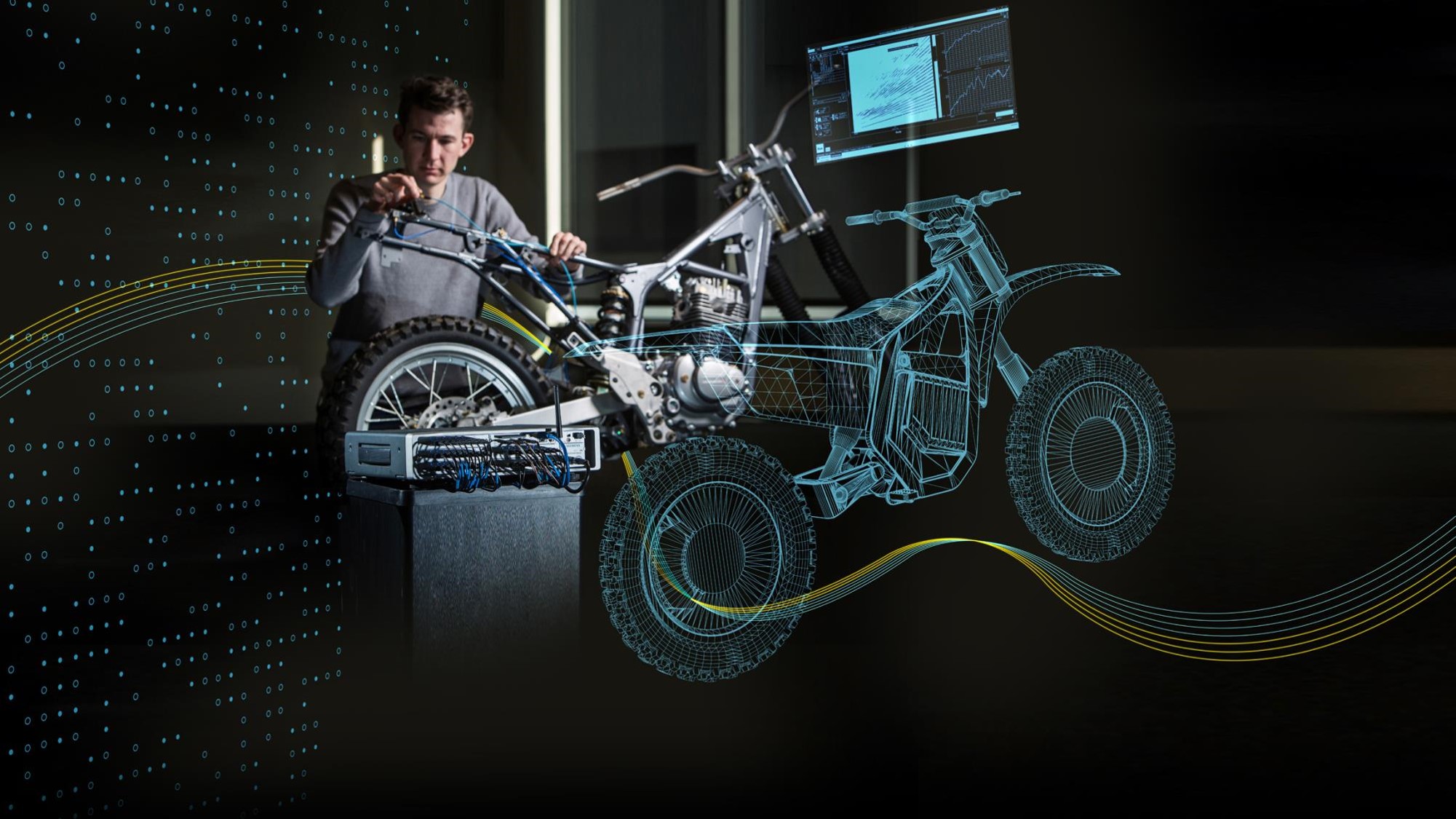Digital Testing Symposium

Access all presentation material from our August 26, 2020 Event
Learn how Testing is Evolving with the Digital Revolution
Future of Digital Testing Learn how the Siemens Digital Industries Software testing catalog is evolving with digital trends. New testing technologies and close integration with simulation lead to more insights and higher efficiency in testing:
- How are testing and simulation evolving to support product engineering?
- What are the important trends in test?
- How does digitalization change it?
- How will it effect your industry?
17 technical and networking sessions including virtual exhibits. Join us for any or all sessions.
Agenda
8:45 am to 9:30 am – Welcome! Keynote on the Future of Digital Testing – Bruno Massa and Gert Sablon
9:30 am to 10:30 am – Digital Data Acquisition: Transducers, Grounding, Aliasing, Filters – John Hiatt, Charles Rice, Peter Schaldenbrand
Product development relies on accurate testing campaigns. Ensure that high quality digital data is the outcome of your testing campaigns:
- Transducers: Mass Loading, Ground Loops, Cabling
- Sampling Rates and Anti-Aliasing
- Filters: IIR versus FIR
10:30 am to 11:00 am – Networking Break
11:00 am to Noon – Digital Data Processing: Sampling Rates, Spectral Resolution, Windows, Leakage – Charles Rice and Peter Schaldenbrand
Trying to match or understand digital data results? Learn how digital processing parameters affect data amplitudes, content, and meaning:
- Sampling and Spectral Resolution
- Autopower versus Spectrum
- Windows and Leakage
Networking Sessions – Noon to 1 pm
- SCADAS XS – The SCADAS XS is a 12 channel handheld data acquisition unit with multiple modes of operation – Agnieszka Oltarzewska
- Simcenter 3D – The Siemens Computer Aided Engineering package interacts with Simcenter Test data for the highest fidelity models – Ramana Kappaguntu
- Sound Camera – Acoustically trouble shoot any product in minutes – Charles Rice
- SCADAS Hardware – Simcenter SCADAS hardware is the backbone of any measurement campaign – Jason Wayman
- Electric Vertical Takeoff (EVTOL) Acoustic – New generation electric vehicles operate in dense urban areas and have more stringent acoustic requirements – Paul Deacon
1 pm to 2:00 pm – Track 1: Acoustics – Sound Pressure, Weightings, Octaves, Sound Power – Scott MacDonald and Peter Schaldenbrand
Acoustic performance is one of the hardest attributes to engineer. Acoustic problems are often subject to human perception rather than hard data. Learn how to quantify and tackle acoustic issues.
- Sound Pressure
- Decibels and A-Weighting
- Octaves
- Sound Power
1 pm to 2:00 pm – Track 2: Durability – Stress, Fatigue Life, SN-Curves, Rainflow, Strain Gauges – John Hiatt
The durability performance of a product is mandatory: warranty costs must be minimized, and customer satisfaction is paramount. Overview the complete durability engineering process:
- Cyclic Fatigue Principals: Stress, strain, SN Curves, rainflow counting
- Gathering load data and calculating damage
- Fatigue Life: Miner’s Rule, Stress Life, Strain Life
1 pm to 2:00 pm – Track 3: Vibration Control – Introduction, Selfcheck, Random Control – William Flynn
Success vibration testing requires an intimate knowledge of shaker, control modes, and more:
- What is vibration control testing?
- Selfcheck
- Random Control: Averages per Loop, Weighting, DOFs
1 pm to 2:00 pm – Track 4: Modal Correlation - Resonance, FRFs, Impacts, Damping – Scott Beebe and Keith Moss
Avoiding resonances reduces and vibration and increases customer satisfaction. Learn how to determine the resonances of a structure experimental and calibrate forward looking simulation models:
- Natural Frequencies, Damping, Mode Shapes
- Frequency Response Functions
- Experimental Modal Data Acquisition: Impact Testing
- Modal Curvefitting
2:00 pm to 2:30 pm Networking Break
2:30 pm to 3:30 pm – Track 1: Acoustics – Intensity, Sound Quality, Acoustic Materials – Scott MacDonald and Peter Schaldenbrand
Acoustic performance is one of the hardest attributes to engineer. Acoustic problems are often subject to human perception rather than hard data. Learn how to quantify and tackle acoustic issues.
- Acoustic Intensity
- Sound Quality: Sones and Loudness, Jury testing
- Sound absorption and transmission loss
2:30 pm to 3:30 pm – Track 2: Durability – Mission Synthesis – John Hiatt
The durability performance of a product is mandatory: warranty costs must be minimized, and customer satisfaction is paramount. Overview the complete durability engineering process:
- Mission Synthesis for Accelerated Shaker Testing
- Fatigue Damage Spectrum
- Shock Response Spectrum
2:30 pm to 3:30 pm – Track 3: Vibration Control – Sine, Shock, Transient Capture – William Flynn
Success vibration testing requires an intimate knowledge of shaker, control modes, and more:
- Sine: Compression Factor, Loop Time
- Shock: Classical Pulses, Shock Response Spectrum
- Transient Capture: Filters, Slew Rates
2:30 pm to 3:30 pm – Track 4: Modal Correlation – Pretest, FEA-Test Correlation, Model Updating – Scott Beebe and Keith Moss
Avoiding resonances reduces and vibration and increases customer satisfaction. Learn how to determine the resonances of a structure experimental and calibrate forward looking simulation models:
- Experimental Modal Validation
- Modal Assurance Criteria
- Pretest Analysis
- Finite Element Model (FEA) updating
3:30 pm to 4:pm – Conclusion – Jason Wayman
The final word on digital testing today!


